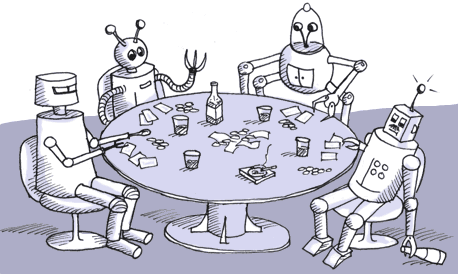
Millions of different computations.
It's very simple, it's legal and no one on the other side of the screen will ever know. I've run a cable from the PC showing the game - or, rather, games - into a laptop running some specialist poker software. This displays an information-only Etch A Sketch-like rendering of the poker tables; the cards, the betting, the players contending the pot. The laptop is making millions of different computations based upon the strength of my hand and how the others are betting. Then it places 'my' bet. I don't have to lift a finger or even be in the room.
Online poker is nothing more than a busted flush.
If you're a poker player, this is merely unethical. But if you're an executive or shareholder in one of the top poker websites, the advent of programs that play for you is very bad news indeed. Online poker is a £3bn-a-year industry - £3m is gambled on online poker every day in Britain alone (we're now the fifth biggest gambling country in the world). But this depends on the punters knowing they're getting a fair game. When they're up against expertly programmed computer players, then they are, quite emphatically, not. And if these programs evolve as fast as the experts predict, online poker is nothing more than a busted flush.
The game is completely corrupt.
One expert in this powerful new software, 'Chopper', tells me, 'It's amazing to think of how much we gamble on online poker sites - mainly because there is no such thing as a fair game of online poker. It just doesn't exist. The game is completely corrupt; it has zero integrity. Online players are secretly using every means at their disposal to fleece you --and at the forefront of their campaign is the use of poker robots. When all this becomes public knowledge, the amateurs will leave and the game will die.'
Phil Robinson
You'll never beat poker robots


